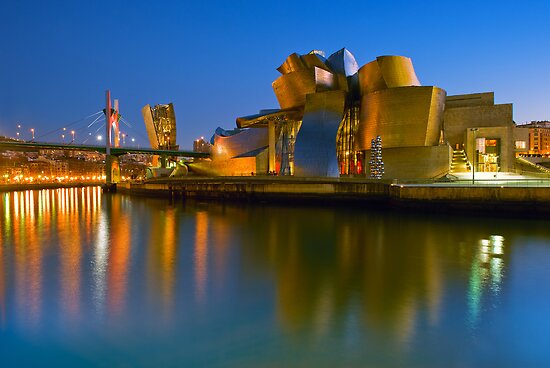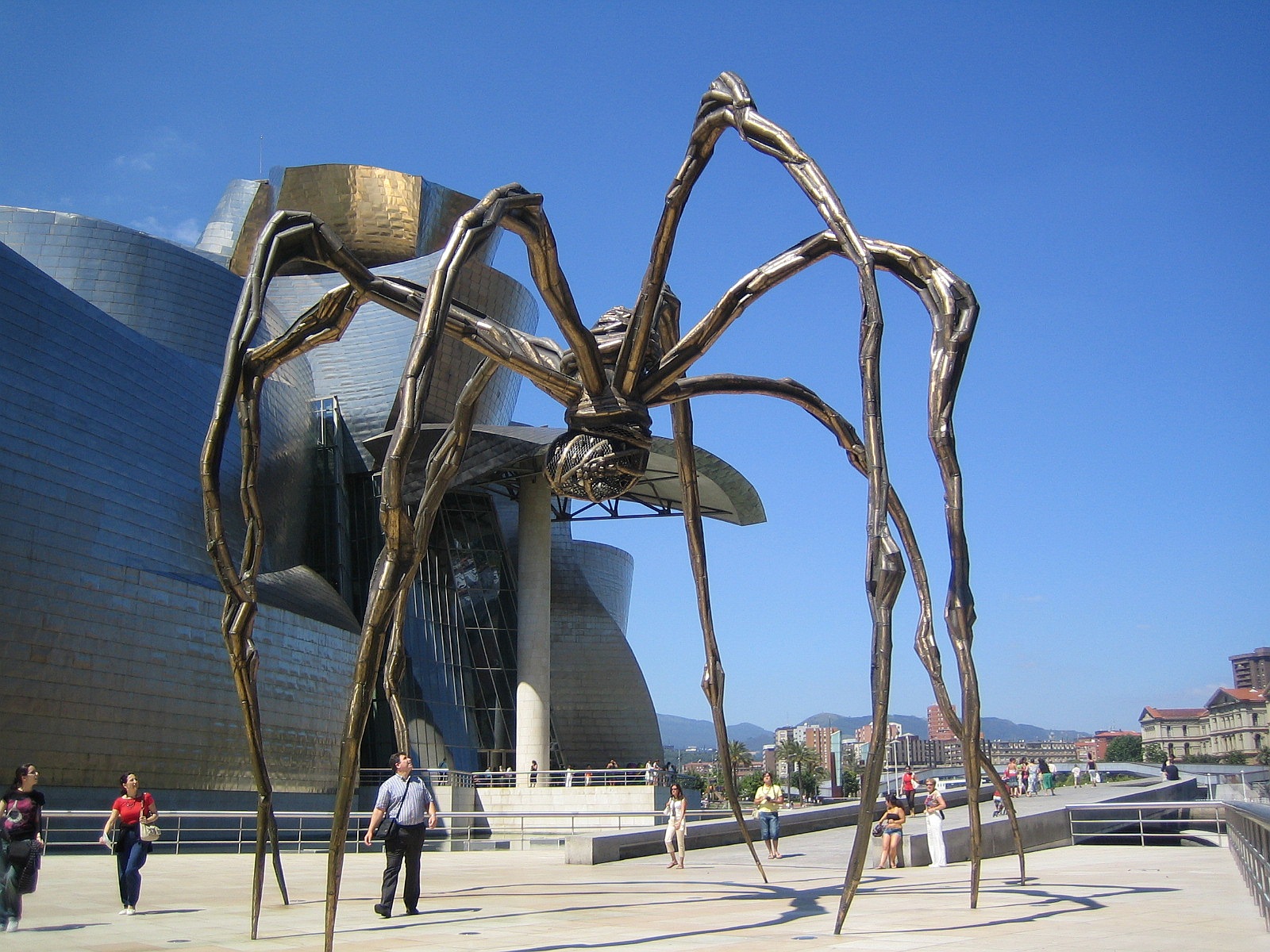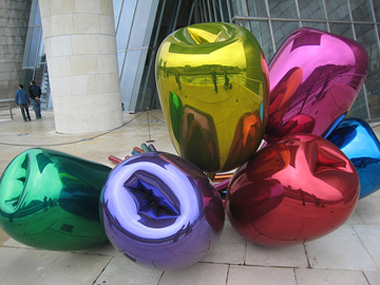
One of the most admired works of contemporary architecture, the building has been hailed as a "signal moment in the architectural culture" because it represents "one of those rare moments when critics, academics, and the general public were all completely united about something."The museum was the building most frequently named as one of the most important works completed since 1980 in the 2010 World Architecture Survey among architecture experts.
The curves on the building were to appear random. The architect said that "the randomness of the curves are designed to catch the light".[5] When it was opened to the public in 1997, it was immediately hailed as one of the world's most spectacular buildings in the style of Deconstructivism, although Gehry does not associate himself with that architectural movement. Architect Philip Johnson called it "the greatest building of our time".
The museum's design and construction serve as an object lesson in Gehry's style and method. Like many of Gehry's other works, it has a structure that consists of radically sculpted, organic contours. Sited as it is in a port town, it is intended to resemble a ship. Its brilliantly reflective titanium panels resemble fish scales, echoing the other organic life forms that recur commonly in Gehry's designs, as well as the river Nervión upon which the museum sits. Also in typical Gehry fashion, the building is uniquely a product of the period's technology. Computer Aided Three Dimensional Interactive Application (CATIA) and visualizations were used heavily in the structure's design.



























